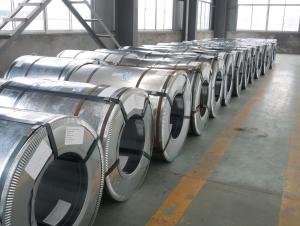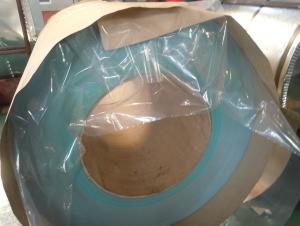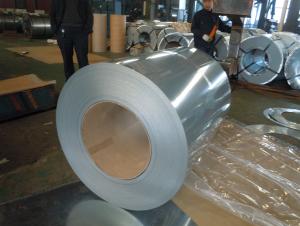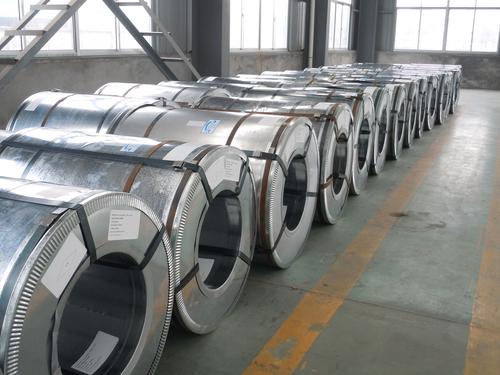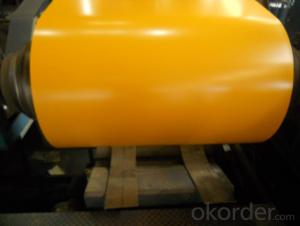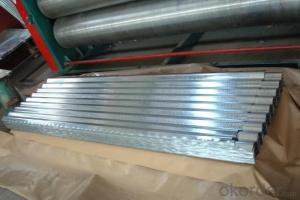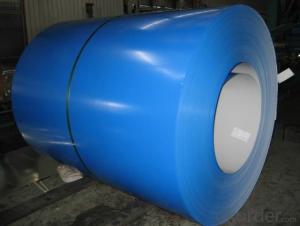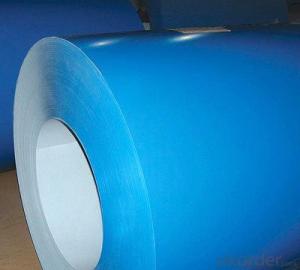Prepaint Galvanized Steel Coil
- Loading Port:
- China Main Port
- Payment Terms:
- TT OR LC
- Min Order Qty:
- -
- Supply Capability:
- -
OKorder Service Pledge
OKorder Financial Service
You Might Also Like
PPGI is made by cold rolled steel sheet and galvanized steel sheets as baseplate, through the surface pretreatment (degreasing, cleaning, chemical conversion processing), coated by the method of continuous coatings (roller coating method), and after roasting and cooling. PPGI is light, beautiful and has good corrosion resistant performance, can be directly processed also, ppgi provides the construction, shipbuilding, vehicle manufacturing, furniture industry, and electrical industry a new material, while ppgi has good effects on the areas of replacing wood with steel, efficient construction, energy saving, prevent pollution etc.
Base material: | hot dipped galvanized steel or Aluzinc Steel |
Standard: | JIS, SGCC, EN, ASTM |
Width: | 800 -1250mm |
Width Tolerance: | within 5mm |
Thickness: | 0.20 - 1.20mm |
Thickness Tolerance: | within 0.2MM |
Performance: | Smooth or Matte or anti-scratch |
Color: | according to RAL standard |
Lacquer Coating thickness: | according to customer needs |
Supply capacity: | 5000 Metric Ton per month |
- Q: In construction, what types of stress require steel to be placed in footings?
- Bending moment , shear stress and punching stresses
- Q: I am thinking about getting a cold steel tilite or a kershaw leek or possibly a buck sirus. If you have had any experience with these knives please give it to me. thanks
- You could argue that CS makes the tougher steel, but as was pointed out, none of their wares are made in the U.S. - if that doesn't matter, then go with the CS. I started with a CS Holdout II and ended up sending it back and going with a Kershaw (Ken Onion) Blur for EDC. My next knife will be a Benchmade- they are pricey but everyone I've ever spoken to about EDC knives tell me to go to Benchmade and no one else. Not one to just listen, I had to try out a few myself. Bought the wife a Kershaw Scallion...in purple, no less.
- Q: I wanna strip down my bike and take off all the paint... im thinking of leaving it just the steal color... Do i need to put anythinng on the steel to coat it or can i just leave it like that... Will it rust or anything?
- If it's stainless steel or aluminum, it won't rust. Chances are the bike parts that have been painted are of metals that will rust. If you like the metal color, then you can get paints that look like metal or you can clear coat it. You might want to consider just a grey primer.
- Q: How are steel coils used in the production of prefabricated buildings?
- Steel coils are used in the production of prefabricated buildings as they are flattened and cut into specific sizes to serve as the structural framework. These coils are typically formed into beams, columns, and other essential components, which are then assembled and interconnected to create the building's frame. The strength and durability of steel make it an ideal material for prefabricated structures, ensuring the safety and stability of the buildings.
- Q: How are steel coils inspected for thickness using ultrasonic testing?
- Steel coils are inspected for thickness using ultrasonic testing by first preparing the surface of the coil and applying a couplant gel. Then, an ultrasonic transducer is placed on the surface and emits high-frequency sound waves into the coil. These sound waves travel through the material and are reflected back when encountering a change in thickness. The transducer receives these echoes and measures the time it takes for them to return. By analyzing the time delay, the thickness of the steel coil can be accurately determined.
- Q: Are Steel Building Kits really helpful while erecting a steel building?
- I put up a 30'x40' Mueller Steel Building from a bolt together kit 6 yrs ago. Fully insulated, 2 10'x10' roll up doors, 1 walk thru door, 3 windows, 2' overhang all around, and gutters. The building price minus the slab was about $9500. The only special equipment was a neighbor's large Farmall with a hay spike on the FEL that we used to lift the trusses in place. Then it was mainly cordless drills to put in LOTS of self tapping screws, circular saw with metal cutting blade, tall ladders, etc. Had help putting up the trusses and putting up the roof panels. Everything else I did by myself. Took about 6 wks, but that was only working weekends and maybe 3 evenings a week since that land is 30 miles from my house. Would have gone a lot faster with at least one helper.
- Q: Some stainless steel products are as shiny as chrome. Can all/most stainless steel be polished to a chrome like luster.
- The nickel and chromium content do have some effect on shine. But mostly they effect the corrosive and rust resistance property's of the stainless steel. 300 series stainless steel such as 304e or 316e will not rust like 400 series 416e eventually will. All types of stainless steel can achieve a bright shine. The key is using jewelers rouge and the correct buffing wheel. Avoid scotchbrite if you want shine. It will clean your stainless steel but it will not shine it the way you want. Miketyson26 (certified tig welder)
- Q: I'm in the process of buying a new car, and wondering if there are more benefits from Aluminum tire rims over Steel. Aluminum wheels cost more, but you'd think that steel would last longer. Are Aluminum wheels just for looks?
- aluminum is lighter , alot of performance cars use them to trim unsprung weight from the wheels ... steel wheels are cheaper but u have to put hub caps on them ... eeeeeuuuuueeewww!!!!!
- Q: What are chemical properties of high speed steel? Physical properties?What is high speed steel used for? One interesting fact about high speed steel?
- wikipedia: High speed steel (often abbreviated HSS, sometimes HS) is a material usually used in the manufacture of machine tool bits and other cutters. It is often used in power saw blades and drill bits. It is superior to the older high carbon steel tools used extensively through the 1940s in that it can withstand higher temperatures without losing its temper (hardness). This property allows HSS to cut faster than high carbon steel, hence the name high speed steel. At room temperature, in their generally recommended heat treatment, HSS grades generally display high hardness (above HRC60) and a high abrasion resistance (generally linked to tungsten content often used in HSS) compared to common carbon and tool steels. see reference for more info .
- Q: What are the common coil processing equipment used in the industry?
- Some common coil processing equipment used in the industry include coil slitters, coil flatteners, coil feeders, and coil recoilers. These machines are essential for processing metal coils into various shapes and sizes, allowing for efficient production and manufacturing processes.
Send your message to us
Prepaint Galvanized Steel Coil
- Loading Port:
- China Main Port
- Payment Terms:
- TT OR LC
- Min Order Qty:
- -
- Supply Capability:
- -
OKorder Service Pledge
OKorder Financial Service
Similar products
Hot products
Hot Searches
Related keywords
